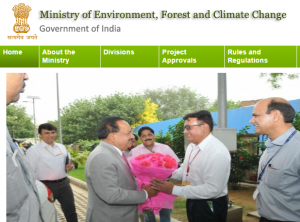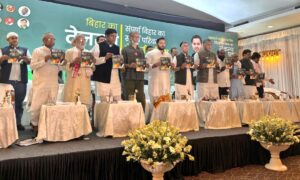
Recently, the Ministry of Environment, Forest and Climate Change(MoEFCC) came with the Prevention of Cruelty to Animals (Regulation of Livestock Markets) Rules, 2017. As notified by the MoEFCC, the rule’s intent is to ensure the welfare of animals and protect animals from cruelty. In the short time of span, this proposed rule fuelled a nationwide protest and debates. The entire nation is seemingly divided over this policy decision. In an attempt to oppose it, Kerala Youth Wing slaughtered A CLAF in public. This incident draws flack from the various hues and the Congress leadership declined to support this step. Such kind of slaughtering is a cruelty at its peak. One can’t connect it with the dietary pattern and food habits. In this backdrop, Impact News is decoding key components and complexities of the animal economy.
Beyond the Hype
Before delving into the detail, there is a need to understand how the animal market works in India. This segment is inherently rural in nature. It is an indispensable of the agrarian economy. With help from a case, Impact News is trying to elaborate it. As of now, the animal market is a well defined geographical enclave in the rural areas. It takes place in any open space with the limited connectivity. In many cases, such places are historical where people from various regions come and ferry their animals. Several traders also come from various cities as well as various states. They negotiate with farmers. There is the provision of documentation. Farmers decide animals’ prices or they mutually decide. After this stage, they transport them to the respective areas. Many times, traders buy animals and livestock after visiting various households in villages. They earn bread and butter from this business. In the recent past, several traders were killed by vigilante and fringe group. There is a sheer lack of institutional mechanism. During the transportation, corrupt police seek rent from them; they can’t allow them to proceed further. It is an apparent trend and one can easily notice such kind of practices in the rural areas. With increasing mechanisation in agriculture, farmers don’t involve animals.
In this backdrop, as the official document claims, “The basic purpose of the Rule is to ensure welfare of the animals in the cattle market and ensure adequate facilities for housing, feeding, feed storage area, water supply, water troughs, ramps, enclosures for sick animals, veterinary care and proper drainage etc.”
It further added, “To facilitate this, two Committees have been constituted, namely the District Animal Market Monitoring Committee for registration of animal market and Animal Market Committee at the local authority level for management of the markets.”
In the Gazette, the Environment Ministry defined a set of terminology related to the cattle and livestock. It proposes an institutional package for this segment. In other words, one can say that it is an attempt to formalise with help from an institutional backing.
According to the Gazette, animal market means a market place or sale-yard or any other premises or place to which animals are brought from other places and exposed for sale or auction and includes any lairage adjoining a market or a slaughterhouse and used in connection with it and any place adjoining a market used as a parking area for visitors to the market for parking vehicles and includes animal fair and cattle pound where animals are offered or displayed for sale or auction.
| Livestock Population in India by Species
(Million Numbers) |
Year | Year |
| Species | 1951 | 2012 |
| Cattle | 155.3 | 190.9 |
| Adult Female Cattle | 54.4 | 76.7 |
| Buffalo | 43.4 | 108.7 |
| Adult Female Buffalo | 21 | 56.6 |
| Total Bovines | 198.7 | 299.6 |
| Sheep | 39.1 | 65.1 |
| Goat | 47.2 | 135.2 |
| Horses & Ponies | 1.5 | 0.6 |
| Camels | 0.6 | 0.4 |
| Pigs | 4.4 | 10.3 |
| Mules | 0.1 | 0.2 |
| Donkeys | 1.3 | 0.3 |
| Yak | NC | 0.1 |
| Mithun | NA | 0.3 |
| Total Livestock | 292.9 | 512.1 |
| Poultry | 73.5 | 729.2 |
| Source : Livestock Census, Government of India | ||
In Section 6, the Notification talks about the establishment of new animal markets:
(1) When the local authority considers fit and necessary to establish an animal market within its jurisdiction, it shall identify a suitable location and develop a blueprint of the animal market.
(2) The District Animal Market Monitoring Committee may approve the blueprint of the animal market or seek further modification or reject the proposal for reasons to be recorded in writing.
(3) Every new animal market shall apply for registration to the District Animal Market Monitoring Committee distinct feature of this sector is the weakness of state capacity, especially in providing services.
The Animal Census 2012 stated that a total number of bovine in India is 299 million (see box). It is a staggering figure. The Economic Survey 2016-17 stated, “Despite having a large cattle population, India’s share of global cattle population and exports of cattle hides is low and declining.” The Survey underlined the importance of the leather and food industry as crucial for generating jobs.
Since the livestock and animal sector is a state subject, only states can implement the laws related to the sector. As of now, this sector is largely informal in nature. The Notification suggested a long list follow which seems very unrealistic. It would be interesting to see how they are going to negotiate with the states. This Notification escalated political slugfest in India as opposition parties like the Trinamool Congress are reportedly labelling it as an unconstitutional decision which is going to erode the federal structure of Indian democracy.


















